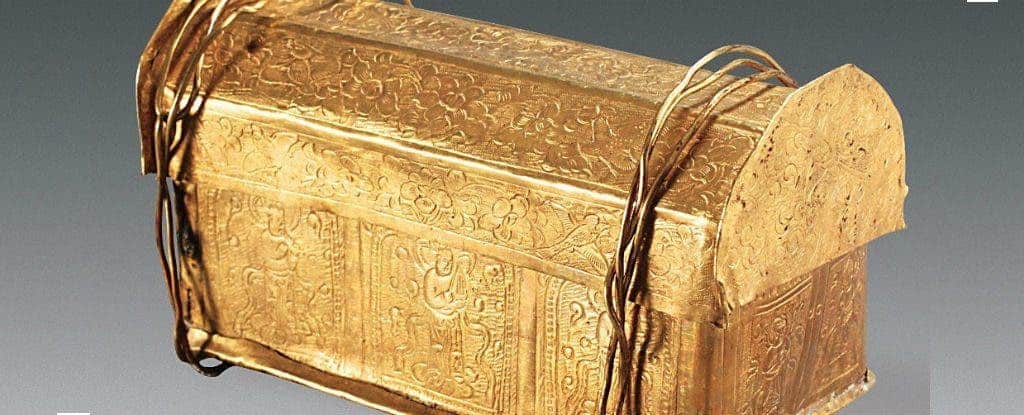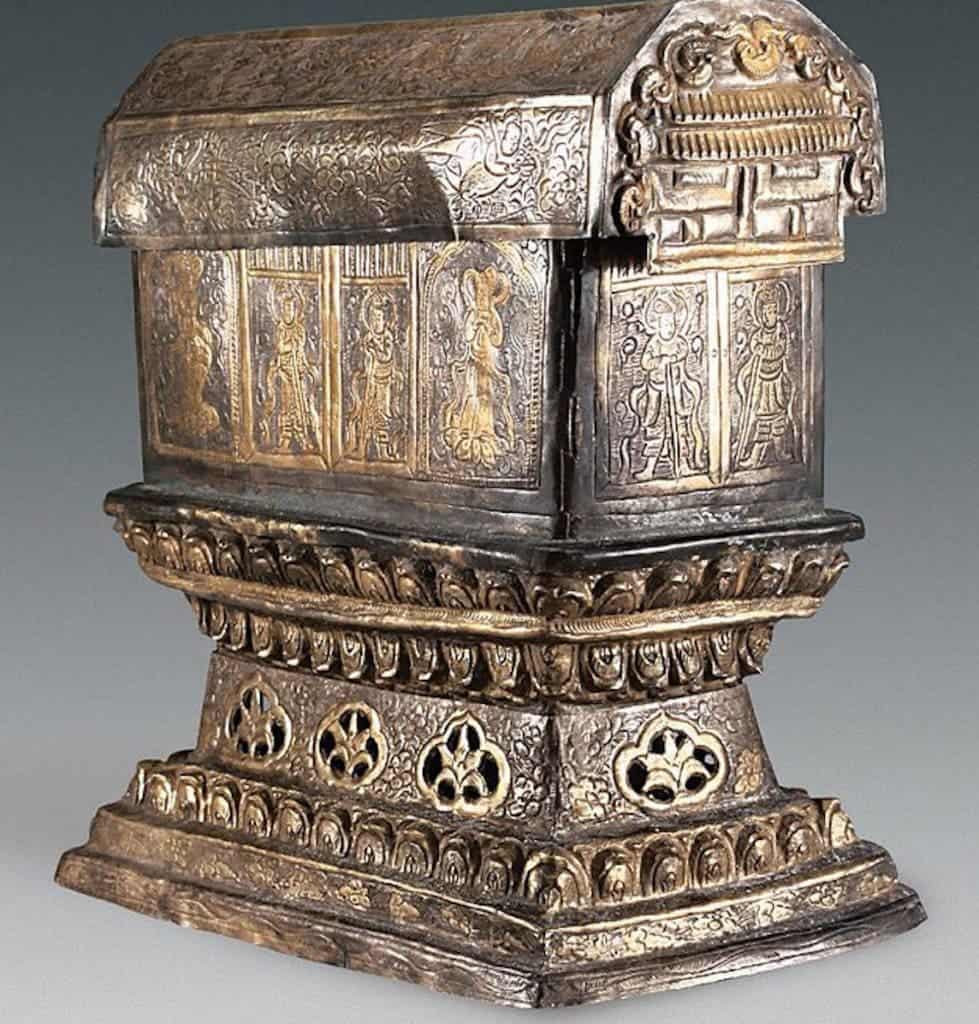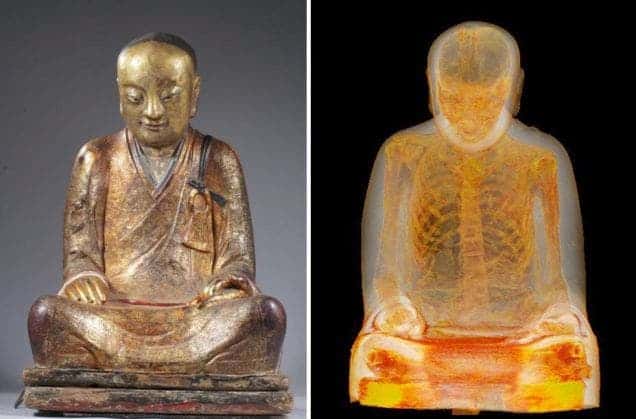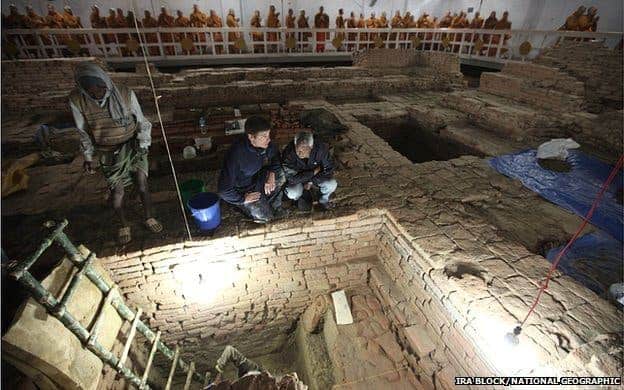Chinese archaeologists have made a monumental claim – they’ve found a skull fragment in an old Buddhist temple which they believe might have belonged to Buddha.

Even without the Buddha claim, the finding is extraordinary. Inside a thousand-year-old Buddhist temple, in an underground crypt in Nanjing, China, they found an exquisitely ornate shrine. The 1.2-metre-tall (4-foot) shrine is made of sandalwood, silver, and gold, decorated in great detail with crystal, glass, agate, and lapis lazuli beads. It’s a dazzling arrangement really, and inside it all, the gold casket contains a skull bone fragment.
The decorations themselves are impressive. The shrine is adorned with images of lotus patterns, phoenix birds, and sword-wielding gods — oyal, divine symbols, used only for the most special people. Whoever created this shrine went through a great deal of trouble to spell out as clearly as possible the importance of the bone — and this is clue number one. The bone was found alongside the remains of Buddhist saints, contained inside three crystal bottles and a silver box.
Secondly, the chest and its various parts were created during the reign of Emperor Zhenzong, around 997 to 1022 AD. The emperor is credited with rebuilding a great Buddhist temple and re-hosting Buddha’s remains inside a temple. The third clue is much more straightforward: along with the shrine, archaeologists found a note from a man called Deming, who was “Master of Perfect Enlightenment, Abbot of Chengtian Monastery [and] the Holder of the Purple Robe.”
“May the Heir Apparent and the imperial princes be blessed and prosperous with 10,000 offspring; may Civil and Military Ministers of the Court be loyal and patriotic; may the three armed forces and citizens enjoy a happy and peaceful time,” this part of the inscription reads.
Deming also recounts how the emperor built and housed the remains.

According to LiveScience, Deming wrote that after the Buddha “entered parinirvana” (a final death that breaks the cycle of death and rebirth), that his body “was cremated near the Hirannavati River” in India. The man who ruled India at the time, King Ashoka (reign 268-232 B.C.), decided to preserve the Buddha’s remains, which he “divided into a total of 84,000 shares,” Deming wrote. “Our land of China received 19 of them,” including the parietal bone, he added.
But as the saying goes, great claims require great evidence, and this, while quite convincing, is still only circumstantial evidence. As far as circumstantial goes, this paints a very strong case, but there is still no tangible indication that this really is Buddha’s bone. Unfortunately, it’s also probably the best evidence we’re going to get.
Strangely enough, Chinese media reported this uncovering back in 2008 and the shrine used be in Hong Kong in 2012, before being housed permanently in Qixia Temple, a Buddhist temple on Qixia Hill in Nanjing. When the bone traveled to Macao in 2012, the media outlet Xinhua reported that “tens of thousands of Buddhist devotees will pay homage to the sacred relic,” and that “more than 140,000 tickets have been sold out by now, according to the [event organizer].
However, because the finding wasn’t published in a scientific journal, western media (ourselves included) have remained mostly oblivious to it. The findings were now published in the journal Chinese Cultural Relics.





